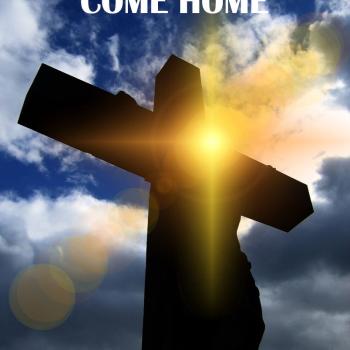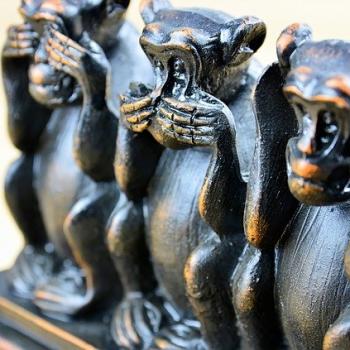A Sign of Contradiction
Christian nationalism has gotten popular in the US over the last decade or so. It isn’t the same thing as Trumpism: Trumpism is a version of Christian nationalism, and a fairly crude one, but there are much more sophisticated types. This is why educated, literate voices like Doug Wilson and Stephen Wolfe can promote Christian nationalism among Protestants as a serious political project; it’s a little like theonomy,1 which Wilson has been preaching for decades.
Among Catholics, integralism has played much the same role. This is the belief that, far from maintaining a “wall of separation,” the state should be officially Catholic; this normally comes with other sweeping legal and social changes and a generally authoritarian tone. As a rule, integralists maintain that it is not merely a theological opinion, but part of the Church’s teaching (which makes its complete absence from the New Testament a little weird, but never mind). The early-to-mid twentieth century saw a lot of this in Europe; Franco’s Spain, Dollfuss’s Austria, and Salazar’s Portugal are widely praised by integralists. It doesn’t have to be nationalistic to work, but it fits in with nationalists quite comfily, and many integralists are in fact nationalists as well.
All this is too bad, since Christian nationalism is from hell.
The Preaching of Antichrist by Luca Signorelli (1504)
—fresco in Orvieto Cathedral, central Italy
Now, I’m a kidder, so you might think I’m joking or exaggerating to make a point with that last sentence. I am not. When I say Christian nationalism is from hell, it’s because that’s what I mean, in plain English.
Exitus
Unluckily, a lot of Christians apparently don’t know hell when they see it. Worse, a lot of them seem convinced that hell can be persuaded to cooperate with heaven—and that the only effect of this alliance will be heaven getting its way. This strongly suggests that American Christians don’t clearly understand what heaven is.
This isn’t great! If we’re supposed to be citizens and emissaries of the kingdom of heaven, but we don’t know our own native language or laws, we’re probably just going to get used to whatever our surroundings are. And we were given instructions about that.
Love not the world, neither the things that are in the world. If any man love the world, the love of the Father is not in him. For all that is in the world, the lust of the flesh, and the lust of the eyes, and the pride of life, is not of the Father, but of the world. And the world passeth away, and the lust thereof: but he that doeth the will of God abideth forever. —I John 2.15-17
These all died in faith, not having received the promises, but having seen them afar off, and were persuaded of them, and embraced them, and confessed that they were strangers and pilgrims on the earth. For they that say such things declare plainly that they seek a country. And truly, if they had been mindful of that country from whence they came out, they might have had opportunity to have returned. But now they desire a better country, that is, an heavenly: wherefore God is not ashamed to be called their God … —Hebrews 11.13-16
The aim of this series is to explain what the kingdom of heaven is, and, correspondingly, what hell is. I both think and hope that this will make it clear why Christian nationalism (as it calls itself) belongs to hell rather than heaven.
Reditus
To get things straightened out, we’ll need to go back to a beginning. Not the beginning, but a beginning: the beginning of St. John the Baptist’s ministry. The Baptist, you remember, is the forerunner of Christ: the voice of him that crieth in the wilderness, “Prepare ye the way of the Lord.” What he says and does is prepares the way for what Christ says and does: it is his context, his backdrop. Among them that are born of women there hath not risen a greater than John the Baptist—which makes it kind of weird that we modern westerners pay so little attention to him2—notwithstanding he that is least in the kingdom of heaven is greater than he.
I believe the Baptist symbolizes something we badly need in the modern Church. He has one message; Christ has another, one that is related to the forerunner’s but distinct from it. We tend to subsume the forerunner’s message into Christ’s, which clashes with history: the two men were distinct enough that to this day, St. John the Baptist is the central figure of an entire independent religion. Somewhere, somehow, we started to smudge differences that we absolutely must keep clear—the differences between command and permission, gift and wage, normal and ideal.
It’s a natural mistake to make. Yet it is crucial that we un-make it. The gospel, as such, depends on it.
Eat Bugs, Take a Bath, Save the World
Ikon of St. John the Baptist as “the angel of the desert”
(written3 ca. 1620)
So what does the Baptist do and say?
What he does is straightforward, if odd. First, he spends about thirty years in the southern Israeli scrublands eating bugs, and possibly hanging out with other religious weirdos known to frequent the area.4 Then he comes back to civilization and starts a street-preacher routine (which, to be fair, is less weird at this time). He has a gimmick, too, a showy virtue-signal: if you accept his preaching, you get a full-body dunk in the drink.
Now, ritual purification by washing was very normal to Jews. Standard forms were washing your feet on entering someone’s home (everyone wore sandals, and the roads were covered in camel dung!) and your hands before eating. But ritually washing your whole body, or tevilah,5 was not common; this was something you did after a period of being ritually unclean (e.g. after touching a dead body), or in preparation for a solemn feast. Or, if a Gentile converted to Judaism, part of their conversion ritual was to undergo tevilah.
In other words, the symbols John the Baptist was using implied the Jewish people were about to have an encounter with God, one they needed to prepare for by the fullest, most formal religious cleansing. He might even be hinting that they’d hardly be better off than the Gentiles, when it showed up.
This implies a radical re-commitment to observing the Torah, not just in public conduct but from the heart. However, symbols generally come with a message, and St. John the Baptist’s symbols were no exception. What did he say?
Footnotes
1Roughly speaking, theonomy is the belief that:
- The Law of Moses has not been abolished—only some of its ritual aspects, like circumcision and kosher.
- The Law of Moses is not only God’s covenant with the Jews, but the embodiment of God’s will for mankind in general, in civic as well as our moral and religious matters.
- The political calling of the Christian is, therefore, to use the powers at their disposal (whatever those are) to influence their own sphere (whatever that is) toward conformity with God’s law.
Though not all Calvinists go in for it, theonomy has been an element in the Calvinist tradition for centuries. Calvinist commonwealths, like Geneva or the Massachusetts Bay Colony, have typically sought to enforce it.
2I’m told St. John the Baptist plays an important, persistent role in eastern devotions and ikonography, both Orthodox and Catholic. This was true in western Europe during the Middle Ages, too; in Medieval and Renaissance culture, the default “St. John” (I gather) is the Baptist, not the Evangelist. Why this emphasis on the Baptist faded, I don’t know.
3In the eastern tradition, ikons are conventionally referred to as “written” rather than “painted”; the term is the same in Greek, but the distinction is made in English.
4These would be the Essenes (almost certainly the group which created the Dead Sea Scrolls). They lived in secluded communes in the east and southeast of Judea; their views were strongly mystical and apocalyptic, they considered the Temple system corrupt, and they appear to be the only Jewish sect who admired celibacy. How much they influenced St. John the Baptist and primitive Christianity is debated, though there’s consensus that they must have had some contact.
5The Greek word for “to dip, wash, submerge” was baptizo, so Greek-speakers referred to tevilah as baptisma. This of course is where we get the word baptism. It’s also likely why the author of Hebrews refers to “baptisms,” in the plural, in 6.2 of his epistle.









